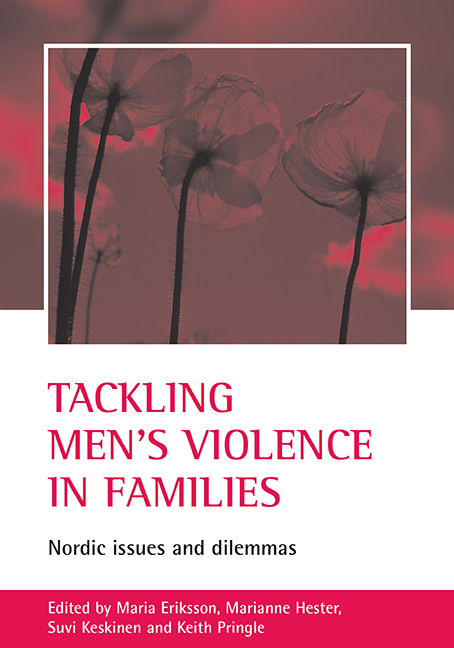Book contents
- Frontmatter
- Contents
- List of tables and figures
- Acknowledgements
- Notes on contributors
- one Introduction: Nordic issues and dilemmas
- two Children, abuse and parental contact in Denmark
- three Commitments and contradictions: linking violence, parenthood and professionalism
- four “Talking feels like you wouldn’t love Dad anymore”: children’s emotions, close relations and domestic violence
- five Bypassing the relationship between fatherhood and violence in Finnish policy and research
- six Marching on the spot? Dealing with violence against women in Norway
- seven Children’s peace? The possibility of protecting children by means of criminal law and family law
- eight A visible or invisible child? Professionals’ approaches to children whose father is violent towards their mother
- nine “Take my father away from home”: children growing up in the proximity of violence
- ten Neglected issues in Swedish child protection policy and practice: age, ethnicity and gender
- eleven Tackling men’s violence in families: lessons for the UK
- References
- Index
three - Commitments and contradictions: linking violence, parenthood and professionalism
Published online by Cambridge University Press: 20 January 2022
- Frontmatter
- Contents
- List of tables and figures
- Acknowledgements
- Notes on contributors
- one Introduction: Nordic issues and dilemmas
- two Children, abuse and parental contact in Denmark
- three Commitments and contradictions: linking violence, parenthood and professionalism
- four “Talking feels like you wouldn’t love Dad anymore”: children’s emotions, close relations and domestic violence
- five Bypassing the relationship between fatherhood and violence in Finnish policy and research
- six Marching on the spot? Dealing with violence against women in Norway
- seven Children’s peace? The possibility of protecting children by means of criminal law and family law
- eight A visible or invisible child? Professionals’ approaches to children whose father is violent towards their mother
- nine “Take my father away from home”: children growing up in the proximity of violence
- ten Neglected issues in Swedish child protection policy and practice: age, ethnicity and gender
- eleven Tackling men’s violence in families: lessons for the UK
- References
- Index
Summary
Whereas in most Western and North European countries the discussion of wife abuse was brought to the public agenda by the feminist movement, the Finnish history of dealing with this question has been different. The feminist movement has been relatively weak in Finland, and the issue discursively constructed in gender-neutral and familycentred terms. A social service-like approach has been characteristic of the Finnish shelters. During the past decade, a view of wife abuse as a gendered phenomenon has received growing attention. The discursive shift has many connections with social and healthcare bureaucracy and professional services. This background has led to a mixture of professional and feminist influences in the discussion on violence and family relations.
This chapter analyses how violence and parenthood are discussed and worked with in Finnish family counselling agencies. It traces the different discursive resources that are drawn upon when these issues are handled and examines their common points and discrepancies. The combination of professional and feminist influences is essential in the analysis of the agency practices. The chapter is based on an ethnographic study that focused on family counselling professionals’ work with violence.
From family violence to violence against women
The first shelter in Finland was established in 1979 by the Federation of Mother and Child Homes (later the Federation of Mother and Child Homes and Shelters), an organisation providing housing and social services for single mothers with babies. From the beginning, the explicit aim of the shelters was to work with the whole family, not only women and children. In the late 1970s, a few efforts were made to open a discussion from a feminist point of view. The League of Finnish Feminists collected women's stories of their experiences of violence and one shelter was established with a feminist orientation. The feminist movement was, however, not strong enough to make its voice heard in the public discussion and these views were marginalised for more than a decade.
The issue of wife abuse was formulated as the discourse of ‘family violence’. This is based on gender-neutral rhetoric in which all types of violence within the family context are equated (Ronkainen, 1998, pp 12-13; see also Dobash and Dobash, 1992).
- Type
- Chapter
- Information
- Tackling Men's Violence in FamiliesNordic Issues and Dilemmas, pp. 31 - 48Publisher: Bristol University PressPrint publication year: 2005
- 1
- Cited by



